Resources
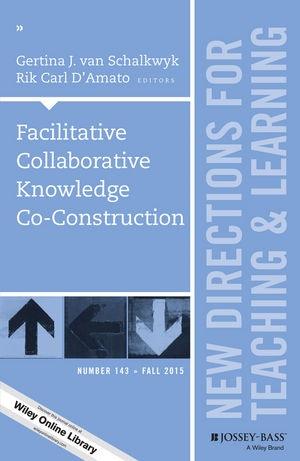
Facilitative Collaborative Knowledge Co-Construction is the second volume in a series under the Jossey-Bass New Directions for Teaching and Learning imprint (see Carolyn Jones Medine’s review of volume 1, From the Confucian Way to Collaborative Knowledge Co-Construction, posted April 15, 2016). Van Schalkwyk and D’Amato both have experience at the Centre for Teaching and Learning Enhancement at the University of Macau, China. As such, this volume and its predecessor aim at improving the learning experience of Asian students, particularly in Confucian teaching contexts. In the first volume, the “authors provided a framework that was designed to encourage teachers as they move from a Confucian way of teaching toward a more collaborative way of providing a co-constructed knowledge base in the classroom” (i). “One can certainly train students to memorize facts and follow algorithms, but unless they know what the algorithms mean and when and how to use them, their mastery of the subject is only superficial. Moreover, most of the knowledge that is acquired by rote learning will be lost quickly because it has no connection to anything meaningful in students’ minds and lives” (3), argue the editors. One challenge in considering this volume for use in US-based contexts is that it is firmly aimed at those who have traditionally taught using rote learning and memorization of facts – repeated references to “the Asian classroom” make this clear. One questions the degree to which such methodologies are entrenched among religious and theological educators in this country. Certainly constructivist learning is a challenge for any number of traditional educators, but involving students in problem-solving or helping them see the value of personal reflection and application in their learning is less foreign to many of us. Where these insights may be useful is in reminding faculty of the unique needs of international students coming from Confucian-based systems. Chapters in this volume focus on the value of constructivist, cooperative, and collaborative learning; relational intelligence; insights from neuropsychology; sociocognitive skills and emotional intelligence; and “engendering critical reflective thinking within a collaborative teaching and learning context” (2-3). Mary M. Chittooran’s chapter on “Reading and Writing for Critical Reflective Thinking,” for example, contextualizes specific tools like questioning, feedback, and the presentation of alternative explanations, demonstrating how each might best be used with Asian students. Chittooran also explores sixteen different reading and writing activities; any of these might spur creative ideas for teaching a variety of students. Helen Y. Sung’s exploration of emotional intelligence offers seventeen suggested questions to help expand students’ emotional fluency. There is some repetitiveness between chapters, particularly as various authors review the characteristics of Confucian learning environments and how education is changing. This volume may lend itself best to “cherry picking” whatever portions or techniques are needed for a given professor’s context or students. Most of Amato’s chapter on brain-based learning with Yuan Yuan Wang, for example, may translate over to a variety of educational contexts. Their advice that “learners should not be grouped by age but should be grouped by processing or aptitude levels in most learning activities” (55) is as germane in a Biblical languages class as it is in a room full of international students.
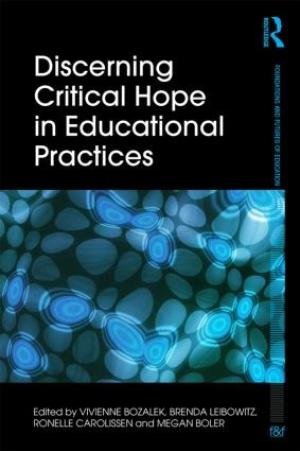
Discerning Critical Hope is a continuation of the work of Paulo Freire, whose famous Pedagogy of the Oppressed (1970) formed a basis for critical and liberation pedagogy. While his early work included hope, he reiterated the importance of that portion of his framework in Pedagogy of Hope (1992). A small but growing literature on critical hope is extant in the field of pedagogy, but this idea has not yet made many inroads into the published works of theologians, despite its connections with liberation theology and the other contextual and critical branches of theological discourse and activism. (Works on critical hope in the religious education and theology literature include: Bock, “Climatologists, Theologians, and Prophets,” Cross Currents; Kim, “Seeking Critical Hope in a Global Age,” Religious Education; and Kuhne, “A Community Pedagogy of Critical Hope,” PhD dissertation). Many readers of the Wabash Center’s publications will undoubtedly already teach in a way consistent with the critical and liberative themes in Freirean thought, critiquing oppressive social structures and advocating for a world grounded in God’s justice and love. After deconstructing oppressive systems and our complicity in them, however, it can be difficult to provide hope in the theological classroom. I personally find it challenging to move students beyond critique and not simply leave ministry students and seminarians with the task of reconstructing their shattered beliefs and worldviews on their own. Critical hope provides a way forward. Within this framework, critique and hopefulness cannot be separated: the point is that we need both. We need to be able to critique the world as it is, while retaining hope for a different future. Within this framework, the educator engages history with a critical lens, invokes students’ imaginations, envisioning a different way, and provides space for practical steps to enact that vision. Discerning Critical Hope includes chapters by a number of scholars, educators, and practitioners. The authors distinguish between critical hope, naïve hope, and false hope. Naïve hope is optimism without a sense of personal responsibility: expecting that things will turn out alright even if one puts forth no effort to make it so. False hope refers to the idea that working hard will result in one joining the oppressing class, a personal rather than systemic release from injustice. Several chapters critique neoliberal education and other forms of supposedly equality-based educational practices that promise merit-based successes, while in reality supporting colonial and patriarchal systems of power. These can serve as cautions for those who teach religion as well. Which of the forms of hope offered in classrooms are naïve or false hopes? Are faculty willing and able to be drawn to a deeper level of hope that can handle the paradox and mystery of critique, of looking in the face of real suffering and injustice, and struggling – hope-filled – toward a better world? Although each chapter has its helpful points, I found chapters 2, 5, and 10 most useful. Chapter 2, “Teaching for Hope: The Ethics of Shattering Worldviews,” by Megan Boler, provides hope for my own teaching. Boler recognizes the real difficulties in engaging critical hope in the classroom: intentionally invoking a pedagogy of discomfort is, not surprisingly, uncomfortable for students and educators alike. Boler states that, when utilizing this pedagogical method, about a third of students will be receptive, about a third will be vocally and angrily resistant, and another third will be numb or apathetic. She shares a difficult classroom experience, including her fears and other feelings as she navigated dealing with resistant students. It gave me courage to continue practicing this form of teaching. Chapter 10 provides a brief history of thinkers who have written about hope, from the Greek myth of Prometheus to Francis Bacon, Immanuel Kant, Georg Hegel, Karl Marx, W.E.B. Du Bois, Ernst Bloch, and Paulo Freire. This provides a helpful entry point into different explications of hope throughout history, especially since many of these philosophers had such a major impact on Western culture and on theology. This chapter delineates how and why critical hope differs from previous understandings of hope. Chapter 5, “Plasticity, Critical Hope and the Regeneration of Human Rights Education,” by André Keet, explains critical hope through the lens of deconstruction, bringing Derrida and other philosophers into the conversation. Keet describes critical hope as that leftover form present after deconstruction occurs, that kernel of truth or “trace” that remains when one strips away all the systems and structures that get layered on top of that essential form. Forms must be physical, must be enacted: these traces cannot remain metaphysical or theoretical, but must be lived. For theological educators, as we critique and deconstruct, we hope and trust there is an essential kernel there for our students to discover, a trace, a divine encounter or transcendent truth, a knowing that goes beyond the laws and organizational structures with which we so often burden our faith. As we critique, we also hope: we sense something there, something infinite, personal and universal, a never-changing essence and a dynamic Spirit of creative transformation. We can never pin it down; it is always a process of becoming. Hope is a means and an end, a way of being and a goal to strive for, but we cannot know for what we hope without critiquing the present context and imagining a different world. Nor can we truly hope unless we embody that hope in praxis, naming the problem, developing a solution, enacting it, reflecting, modifying, and trying again in a constant cycle of transformation. Though the authors of this text do not often discuss religion or spirituality, these topics do come up at points, and the struggles to name injustice and enact a truly just and hope-filled form of education will be recognizable to many religious educators. I recommend this book to educators in the religious academy who want to enact a form of education that goes beyond the banking model, who want to challenge their students to engage in critical thinking, who need courage and a sense of solidarity from knowing they are not alone in this struggle, and who also sense a deep undercurrent of hope in taking one step, and then another, toward that imagined future.
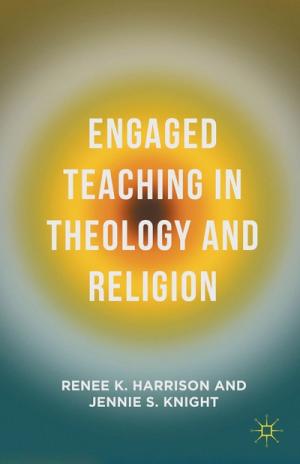
There is wide agreement that student-centered pedagogies yield deeper student engagement and stronger learning outcomes than more traditional “sage-on-the-stage” teaching does. Learning shines when students are invited and equipped to integrate course content with their own experiences, insights, and prior knowledge. In this volume Renee K. Harrison and Jennie S. Knight reflect on personal experiences in the classroom, explore pedagogical theory, and provide examples of applied practices to create a map of the key elements of engaged pedagogy. The map, divided into four sections, moves from the selfhood of the teacher to teaching methods and course content to community context and engagement. Harrison and Knight begin with a premise: that the enterprise of teaching involves the very personhood of the teacher. Either we can acknowledge this and cultivate an awareness of our strengths, blind spots, and biases, or we can ignore it. That deep learning involves the very personhood of students is another key premise. Nurturing this two-pronged awareness – that teachers and students do not leave their wider selves at the door of the classroom – is the necessary ground of engaged teaching. Whole persons are welcomed into the classroom and empowered to reflectively integrate course content with who they are. Sections two and three explore how form and content can either undermine or buttress one another and how, even when teachers aim for the latter, they may unwittingly miss the mark. For example, in classrooms in which more democratic teaching practices are employed, course content may still hew closely to a traditional textual canon, with marginalized voices tacked on at the end. Or content may offer a wide range of perspectives while teaching methods minimize student voices. Ideally, democratic pedagogies and a widened canon reiterate one another. If the goal of learning is not just knowledge acquisition but transformation and if we are inviting students’ whole lives into the process, attending to communal context is likewise crucial. The authors thus cap the volume with strong advocacy for community-based learning (CBL). They discuss the logistical and pedagogical challenges of incorporating community work into courses and illustrate why it is well worth the effort. They offer tools for implementing such work, while acknowledging that sustained success in CBL requires significant institutional buy-in that some teachers may not enjoy. In fact, a particular strength of this volume is its honesty about engaged teaching practices, which while considered innovative in pedagogical circles, are still perceived in many academic circles as less rigorous and less respectable than more classic methods. Harrison and Knight lament that this should be so especially in theological-religious education, where the integration of curricular and worldly knowledge is paramount. Should engaged teaching not be the norm? Recognizing that teachers will need to calculate risks depending on institutional context, they counsel courage for the sake of students’ whole-person integrity – and of the credibility of theological-religious education. The wisdom conveyed in these pages is clearly hard won, over the course of many years across varied institutions. In distilling their experiences, Harrison and Knight offer their readers a real gift. However, while teachers can benefit from the ideas, strategies, and examples laid out in the book, they should not expect to change their own teaching methods and courses overnight. Rather, this volume invites teachers to an ongoing practice of engaged pedagogy that requires continual self-reflection, awareness of institutional and classroom contexts, a willingness to take creative risks, and a commitment to engaging one’s students as whole persons. It is a compelling invitation indeed. For those who prize transformative pedagogy, this volume weaves the best of theory and practice in teaching theology and religion – accessibly, comprehensively, and indeed engagingly. Highly recommended for undergraduate, seminary, and graduate teachers alike.

The up-tick of media covered violence in the USA, as well as the reports of violence from around the world, causes me to pause. While I believe that experiencing the pain, suffering, and uncertainty of the world is calling us to become a nation of compassion, forgiveness, respect and equity, I am also afraid. The Golden Rule or the rule of reciprocity is pursuing us with gusto and I am fatigued. The survival of the planet depends on our willingness to examine ourselves and change. It is mid-summer, and my attentions have turned toward preparing for fall and spring courses. Given the backdrop of terrorism and violence in the world – I feel tentative and uprooted. It is easy to slip into the narrative of “an eye for an eye.” Or fall down the slippery slope of thinking that the suffering of some “expendable” populations is acceptable if others can live well as a result- just collateral damage for the greater cause of democratized capitalism. The anxiety in the nation is palpable. The media identifies the acts of violence and hatred by their geographic locations; Nice, France; Orlando; Charlotte; Ferguson (to name a scant few). We are reeling from news coverage which includes cell phone videos of neighbors and family members who are shot, mauled, assaulted, maimed and murdered. Conversations are polarized about police corruption and arrogance. Colleagues, friends, and politicians are writing public letters in response; public manifestos in protest; public statements of dismay and clarion calls for change. I am appreciative that each literary piece is like a musical note in the score for a new symphony of resistance. In the straining for meaning – comparisons are drawn. Grasping for perspective, people are comparing this 2016 era of violence to the civil rights movement. People are harkening back to the days of blatant assassinations: JFK – 1963, Malcolm X – 1965, King – 1968, Bobby Kennedy – 1968. Others are saying that the flagrant violence dappling the nation is a-day-in-the-life for our brothers and sisters in Israel – or is the everydayness for our brothers and sisters in Beirut and Iraq and Afghanistan. Some people liken the current national violence of 2016 to nights in Watts or Camden or Chicago or Detroit – where nightly gun violence and murder is normal, routine, customary - terrorizing. They use the words of Malcolm X, “… the chickens have come home to roost,” as prophetic finger wagging. The mainstream news routinely including a person who is professing that terrorist attacks cannot change our (U.S.) way of life! The person, usually a white, middle aged, man, proclaims that we must live our lives, keep our habits, and not “let the terrorists win!” I suspect my definition of “terrorists” is more expansive than his. My 88-year-old father now refuses to attend the Saturday matinee for fear of being shot. The most piercing uproar and outcry is for - what to do. Thankfully, the counter-narrative is coming on strong. Organizations like #blacklivesmatter and the Samuel Proctor Conference, led by Dr. Iva Carruthers, are diligently, systemically, and effectively working on the issues of violence, corruption and white supremacy in thoughtful, strategic and transformative ways. These organizations are calling us to empathy, compassion, and justice so we all might live and our babies yet-to-be-born might know safety. As a Drew faculty person, I am thankful for Drew graduates who are on the front lines of the 2016 fight, the 2016 journey toward compassion. An exemplar from Drew is the Rev. Dr. William Barber, II, the President of the North Carolina State Conference of the NAACP and the National NAACP Chair of the Legislative Political Action Committee. When I think of Bill and his tireless work I know I do not teach in vain. Bill’s activism and public theology is shaped, not in spite of his theological education, but by his theological education. With discipline and faith, I tell myself to gather myself – I have to, with intention, keep myself grounded. I force myself to stretch beyond myself. My impulse, like so many of us, given the events of violence across the world, is TO DO SOMETHING! When I quiet myself and take a breath I re-purpose myself to commit to teach as a service of justice. I am convinced we must marshal our smartnesses/our best minds, our most creative spirits, our best innovators to solve the problems of violence, racism, militarism – which, if unchecked, will kill us. My fears are allayed when I think of gathering with my students in the fall semester. Embedded in my course content (explicitly or implicitly) is my yearning for them to be change agents. I believe to teach well is to instill in students the ability to discern work which is meaningful, work which is transformative, work which yields compassion and empathy for the stranger. I am looking forward to challenging my students to exercise and hone their abilities to think deeply, to think imaginatively, and to think with their hearts about new ways of being in the world. The world will become more compassionate when we teach and learn that we all are God’s children – no exceptions. Obscure classrooms in seminaries are full of people who will partner with and collaborate with Bill Barber and the others. My job is to train folks in such a way that they are not seduced nor intoxicated by the trivial, and who can engage the deeper issues of alienation, xenophobia, and hatred which are our plague. The old moorings are gone and the new ones are wrenching and cricking into existence. My job is to assist my students in doing work that is worth doing – the work of justice and compassion.

Theological school deans are not just theological leaders for their institution, they must be EDUCATIONAL leaders. That is, they must implement sound educational practices related to curriculum, instruction, supervision, assessment, and administration. There is a variety of ways to assess the effectiveness of the curriculum, and there are several levels of assessment (program-level, course-level, student testing, student projects, etc.). While faculty members can focus on course-level and individual student learning assessment, academic deans need to focus on program-level assessment in order to evaluate the effectiveness of the school's curricular course of study. Here are ten basic curriculum assessment tools every academic dean needs, nine are covered in previous posts: Outcomes alignment worksheet Syllabus assessment worksheet Curriculum maps Program-level rubrics Alumni survey Grade Distribution report Program retention and completion rate worksheets Entering student profile Graduating class profile Student course evaluations In this final entry of the series we review: 10. Student course evaluations that are worth the trouble Student course evaluations, a form of indirect assessment, can be a meaningful component of a school's formative assessment of its curriculum. Unfortunately, most course evaluation tools do not provide sufficiently meaningful data to be helpful. One evidence may be how difficult it is for most schools to collect meaningful data from the evaluations. Another is how students tend to see them as a chore, resulting in cursory responses and a low rate of return. Further, in most cases, the data collected rarely is analyzed at depth or used to prompt pedagogical actions for improvement in teaching and learning. Two approaches can help make course evaluations worth the trouble for students and for deans. First, a better-designed course evaluation tool, and second, a procedure that helps ensure a higher response rate. 1. A well-designed student course evaluation tool An effective student course evaluation tool will provide data and feedback that is meaningful. That is, the information from student feedback should address issues of pedagogy that are relevant, measurable, and actionable. For example, the mythical Central Generic Theological Seminary gathers the following clusters of information on its student course evaluations: (1) Student profile information (2) Feedback on program-level goals (3) Feedback on instruction and pedagogy (4) Feedback on instructor effectiveness (5) Feedback on the relevance of the course to the practice of ministry (6) Feedback on program and learning integration. In order to make these clusters meaningful, the instrument focuses on instructional effectiveness and curricular program goals, not on what students "like" or "enjoyed." Additionally, the clusters of items are co-factored to yield meaningful interpretation. See the attached "Anatomy of a Student Course Evaluation Tool" which shows how the instrument is structured by clusters and for co-factor analysis. Download Anatomy of student evaluation Once the student evaluations are collected (CGTS uses its learning management system (LMS) for its course evaluations) the dean prepares an aggregate report for the Faculty. The aggregate report includes a comparison of selected items over the course of several semesters. The comparison focuses on areas targeted for improvement based on the student evaluations. Here are some examples: In Example 1 the dean compares student responses to degree program goal 1.A across two semesters. Additionally, the report compares two related items by gender. In Example 2 the dean highlights three instructional items related to coursework (knowledge, principles, skills) and compares the responses over three semesters. This report item shows improvement in the most recent semester indicating that the interventions faculty members applied in their courses to address these issues are having a positive effect. In Example 3 the dean compares a cluster of items related to instruction over three semesters. This feedback becomes important for the Faculty of CGTS in helping it realize the need to be more overt in applying pedagogical strategies that help students be more aware of the course learning objectives and to create learning experiences that yield a higher response from students about achieving the course outcomes. As a result of this feedback, the dean led the Faculty in applying teaching and learning practices to increase the effectiveness of these items. You can download a copy of the student course assessment questionnaire here 2. A rigorous procedure for assessment The second strategy employed by CGTS is the implementation of policies and procedures that help ensure a high rate of return on student course evaluations. The school's policy makes completion of the student course evaluation part of the course completion requirements. Students who do not complete the course evaluation do not receive a grade for the course. Additionally, the school has put in place the procedures to help ensure this indirect assessment data set is part of the formative assessment plan. A Student Course Evaluation Sample Here is a sample of student course evaluation questions with questions that cover the various clusters for co-factor analysis. Download Student Course Evaluation sample

Cláudio Carvalhaes Associate Professor McCormick Theological Seminary In Brazil We who believe in freedom cannot rest We who believe in freedom cannot rest until it comes. (1) We have had a month of intense events in the US. The killings of Black precious people, this time, Philando Castile and Alton...

Joshua Canzona Georgetown University When I was teaching public high school, a colleague in the history department approached me to express his concern about our world religions curriculum. “I am scared to touch it,” he said. What he meant, first of all, was that he felt unprepared to teach about..
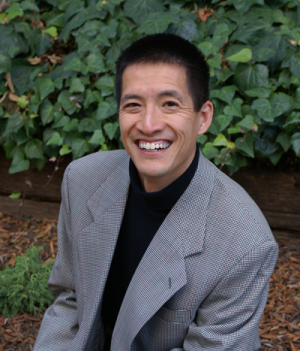
Tat-siong Benny Liew Class of 1956 Professor in New Testament Studies College of the Holy Cross At the Annual Meeting of the Society of Biblical Literature last year, the Student Advisory Board organized an interesting session titled, “What I’m Telling My Students.” I find this a wonderful question for every
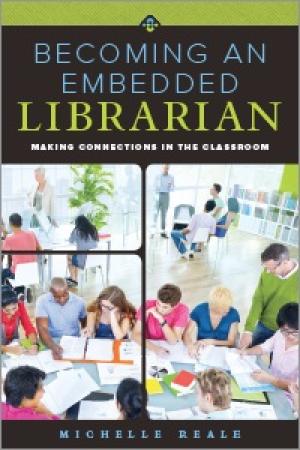
It would be easy to become intimidated while reading Michelle Reale’s book. It isn’t just her wealth of practical knowledge and hard won experience that may intimidate the reader, it is the daunting nature of embedded librarianship (EL) itself. Reale writes that “embedded librarianship necessitates the stepping out of an old, comfortable role and embarking on a new way of being, without the safety net of known results” (79). Even so, setting the intimidation factor aside, there are excellent reasons to add this book to your reading list. The author makes the most of this slim volume, a mere 104 pages, by combining both her personal journey through and scholarly support for her flavor of EL. Tucked in the middle of Reale’s twelve chapters are two chapters discussing educational theory in-depth as it applies to EL. The author’s theoretical foundation is based on Jean Lave and Etienne Wenger’s “community of practice” model of learning. This community work constructs learning through the art of conversation. In addressing the group work that establishes a community of learning Reale writes “learning begins to take shape in community as students are encouraged to think out loud” (37). Her focus is on the librarian encouraging and mediating student communities within the classroom. This approach explains her dedication to in-person EL. While Reale’s scholarship on the application of educational theory to EL is helpful, it is her personal journey that makes this book special. Reale brings the reader along the path, mitigating neither failure nor success, allowing the individual to decide whether this journey is also for them. The book reads a bit like a suspense novel with the reader wondering whether the hero will survive the next faculty encounter or student misunderstanding. The journey is filled with practical advice including concept mapping – hand out sheets of paper with just circles in them to allow the students to fill in; marketing – quoting Ulla de Stricker “Marketing isn’t our issue. Relationships are” (73); and personal goal setting that helps librarians visualize success. Reale’s chapters “Relationship Building,” “Clarifying Your Role,” “Establishing a Teaching Style,” “Setting Personal Goals,” and “Personal Branding” are as effective for standard librarianship as they are for EL. Consequently, even if the reader decides the EL journey is not for them the read is still worthwhile. There was one small negative. It is not evident from the cover that the book discusses only in-class embedding. There is no discussion about online embedding which is becoming more and more relevant with the rapid growth of online education. That in itself is not negative. But this comment juxtaposing online and actual classroom embedding, “I am primarily interested in actual classroom embedding and believe it to be true embedding” (xviii), may lead some to believe Reale is a bit too chauvinistic in her approach. Her comment on one-shot instruction, “The days of one-shot instruction just don’t work anymore,” (8) may add weight to this opinion for those who strive to excel in online embedding or creatively moving forward with one-shot instruction. But considering the value of the rest of the work these are minor concerns.
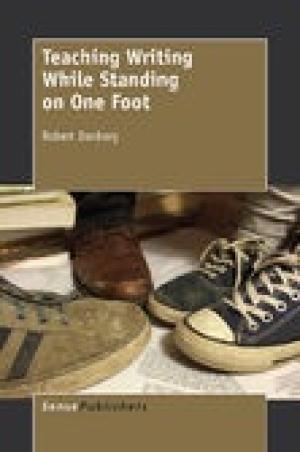
This book is an invitation, and is itself a somewhat circuitous reflection on teaching and learning. Directed at writing teachers, much of Danberg’s advice applies to teaching in general, and not just because faculty teach forms of writing in class. The title borrows an image from a famous rabbinic story in which Rabbi Hillel was asked by a nonbeliever to teach the whole of Torah in the time the nonbeliever could stand on one foot. “That which is hateful to you do not do to others,” Hillel instructed, “The rest is commentary; go and learn it” (13). Danberg reminds us that standing on one foot is a posture of instability, the position of both teachers and learners. He encourages teachers to remember their own difficulties in learning. Following Rosenzweig, Danberg suggests that Hillel did not mean “the rest is only commentary… To know Torah is to know the lesson, but also to participate in an ongoing conversation… into the lesson’s value” (14). Students often seek facts, principles, or methods that they can then apply, but good teachers are able to set them on a path of lifelong inquiry. A series of autobiographical vignettes in prose and poetry, the book is punctuated by reflection prompts, or “commentary.” The author employs several metaphors, but cooking images dominate. A good cook has learned not just to follow a recipe but knows how to see the possibility of a meal in the ingredients on hand; a good cook knows what a dish needs and when it is done. The implied parallel perhaps works best with the craft of writing but the larger point is about what Danberg calls “enfolded knowledge.” Teaching involves confronting the tension “between what we must tell students and what they can only know for themselves” (71). He offers a compelling description of his own learning disability – his struggles, the strategies he developed, and how teachers reacted to him along the way (47). Danberg laments that schools often define gifts narrowly and he suggests the following exercise: “Spend a couple of days observing the people around you and see how many gifts you can identify… Think of yourself as a zoologist whose great pleasure it is to wait for a butterfly they’ve never seen before” (58). Later, he describes class as “an invitation to inhabit forms of attention and attunement, patterns of caution and regard… If all goes well, it is no more mysterious than the heart and mind, that tangle we are always entangled in” (73). Danberg invokes the kabbalistic concept of tzimtzum, the contraction of the divine making space for creation. (This comes in a piece entitled “Four Principles and a Fifth” – but I counted six!). A good teacher knows when to get out of the way in order to make space for learning: “You can shape the problems and anticipate the obstacles. You can decide what a student encounters and the time it takes. But in the end, you simply must get out of the way, and leave them to do the work of learning” (98-99). Reading this book is a bit like ruminating on a Zen koan. Danberg contradicts himself and revels in paradox. The bizarre organization and genre shifts can be frustrating. This is a quirky book, but one with many moments of glittering insight into the difficult joys of learning and teaching.
Wabash Center Staff Contact
Sarah Farmer, Ph.D
Associate Director
Wabash Center
farmers@wabash.edu